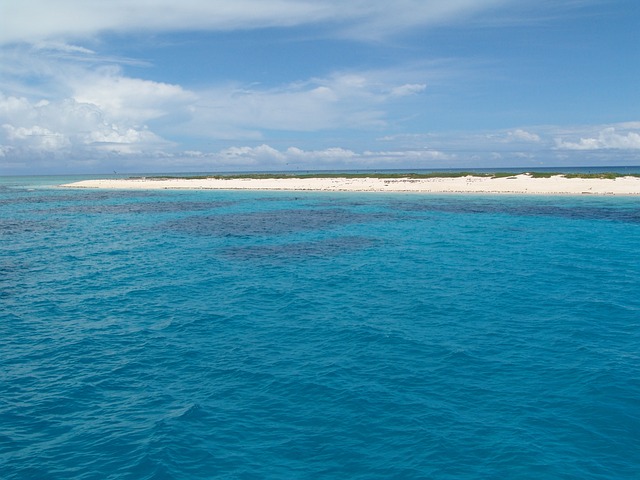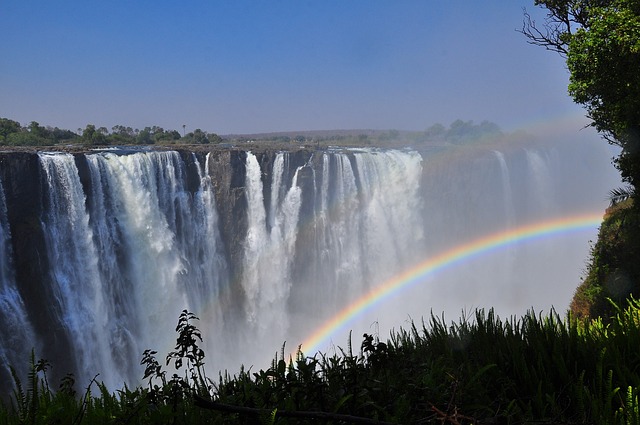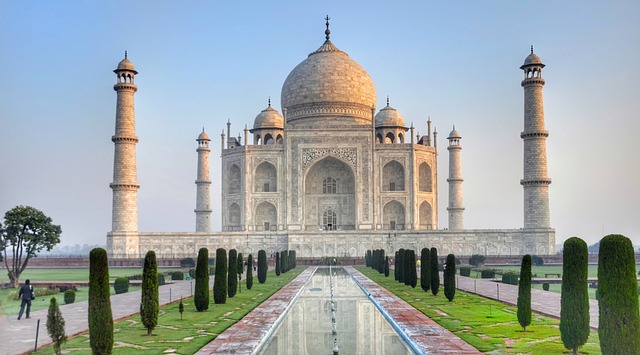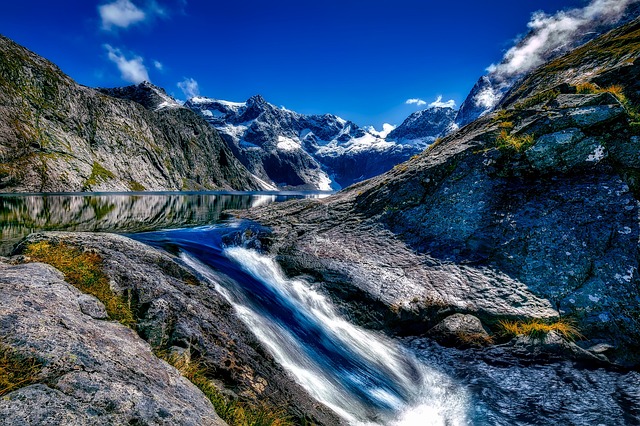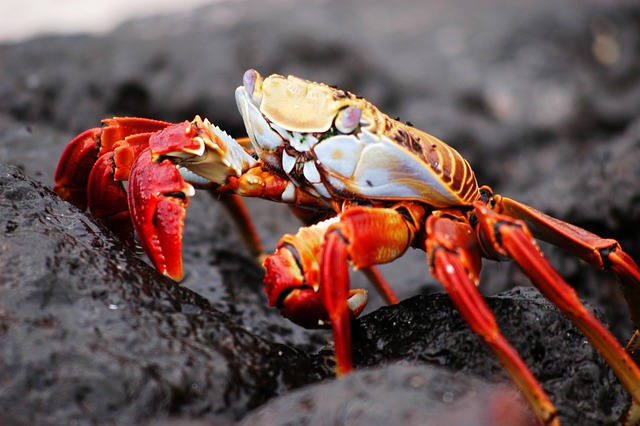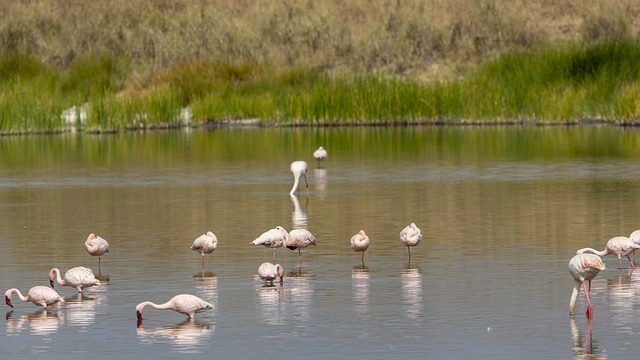Great Barrier Reef, Australia: An Underwater Paradise
One of the most marvelous gifts of nature is the Great Barrier reef existing along the coast of Australia. The Great Barrier Reef is a collection of over 2,900 separate coral reefs occupying an area of about 2,300 kilometers with 900 islands.

Inscribed into the list of World heritage in 1981, The Great barrier reef has about 1500 fish species, 400 species of corals and plenty others like sharks, dolphins and turtles. The reef has been a culturally significant site for Aboriginal Australian and Torres Strait Islanders, who have continued practicing their beliefs in it. The Great Barrier Reef is one of the most incredible sites that should be on any traveler’s itinerary when going to Australia.
Ecology and Biodiversity

Great Barrier Reef has many marine life including corals and island ecosystems.
Great Barrier Reef has many marine life including corals and island ecosystems.
It houses many unique marine organisms, corals as well as islands’ environments within the Great Barrier Reef. Unique coral-algae symbiosis forms one of the major building blocks that sustain the overall biota population of the Great Barrier reef.
Coral and Algae Symbiosis
It is the biggest coral reef system in the Globe covering approximately 2,300 km. The reef comprises more than 600 different kinds of soft and hard corals. Corals live off symbiosis with algae that is converted into energy for themselves through photosynthesis.
Marine Species
Over 9,000 species of aquatic life dwell in Great Barrier Reef including different kinds of fishes, sea snakes, whales, turtles, dolphins, sharks, rays, bird, etc. Additionally, it harbors some species of hard and soft corals as well as the seagrasses that are home some organisms.
Island Ecosystems
The barrier reef is not just another coral reef, it is also made up of various islands and cays. Various marine creatures such as seabirds, turtles, and others benefit from the ecosystem provided in these islands. Mangoes, seagrass beds, among other plants, are available in the islands.
To sum it up, the Great Barrier Reef is an intricate ecosystem comprising a lot of marine species and diversity. This ecosystem requires much protection and conservation for the numerous organisms inhabiting it.
Threats and Conservation

The Great Barrier Reef is a unique and diverse ecosystem that is home to thousands of species of marine life. However, it is facing several threats that are endangering its existence. In this section, we will discuss the major threats to the reef and the conservation efforts being undertaken to protect it.
Climate Change Impact
One of the biggest threats to the Great Barrier Reef is climate change. The rising temperature of the ocean water is causing coral bleaching, which is when the coral loses its color and eventually dies. The increased frequency of extreme weather events such as cyclones is also damaging the reef.
Coral Bleaching Events
Coral bleaching is a major concern for the Great Barrier Reef. It is caused by the warming of the ocean water due to climate change. The bleaching event in 2016 and 2017 affected two-thirds of the reef, causing significant damage. It is estimated that the reef may never fully recover from the damage caused by these events.
Human Influences
Human activities are also contributing to the damage of the reef. Pollution from coastal development and agriculture is affecting the water quality of the reef. Overfishing is also a concern, as it can disrupt the ecosystem and cause imbalances. The crown-of-thorns starfish is another threat to the reef, as it feeds on the coral and can cause significant damage.
To address these threats, several conservation efforts are being undertaken. The Australian government has implemented the Reef 2050 Plan, which aims to improve the water quality of the reef and reduce the impact of human activities. The plan also includes measures to address climate change and reduce greenhouse gas emissions.
In addition, research is being conducted to better understand the threats to the reef and develop new conservation strategies. The Great Barrier Reef Marine Park Authority is working with other organizations to monitor the health of the reef and develop plans to protect it.
Overall, the Great Barrier Reef is facing significant threats, but there are efforts underway to protect and preserve this unique ecosystem. It is important that we continue to work towards conservation and sustainability to ensure that future generations can enjoy the beauty and diversity of the reef.
Cultural Significance

The Great Barrier Reef is not only a natural wonder but also holds immense cultural significance for Australia. This section explores the cultural heritage of the Great Barrier Reef, with a focus on Indigenous heritage and modern Australian identity.
Indigenous Heritage
The Great Barrier Reef has been a significant part of Aboriginal and Torres Strait Islander culture for over 60,000 years. These communities have a deep connection to the reef and its surrounding waters, which they view as a living entity that sustains their cultural traditions and identity. The Torres Strait Islander Traditional Owner groups have a special connection to the Reef and possess cultural knowledge of their traditional use of the Great Barrier Reef region.
Modern Australian Identity
The Great Barrier Reef is a symbol of modern Australian identity, representing the country’s natural beauty and unique marine biodiversity. The Great Barrier Reef Marine Park Authority plays a crucial role in managing the Reef and preserving its cultural heritage, working closely with Indigenous communities to ensure their cultural traditions are respected and preserved.
In recent years, the Great Barrier Reef has become a popular tourist destination, attracting visitors from around the world. The tourism industry has contributed significantly to the local economy, but it also poses a threat to the Reef’s fragile ecosystem. The Australian government has implemented measures to protect the Reef from the impacts of tourism, including limiting the number of visitors and promoting sustainable tourism practices.
Overall, the Great Barrier Reef is a significant part of Australia’s cultural heritage, representing the country’s unique identity and natural beauty. It is essential that we continue to protect and preserve the Reef for future generations to enjoy.
Tourism and Recreation

The Great Barrier Reef is one of the most popular tourist destinations in Australia, attracting millions of visitors each year. The reef is a World Heritage site and is home to a diverse range of marine life, making it a popular destination for divers and snorkelers alike.
Diving and Snorkeling
The Great Barrier Reef is a diver’s paradise, with crystal clear waters and a wide variety of marine life. Divers can explore the reef’s coral gardens and swim with schools of tropical fish. Snorkelers can also experience the beauty of the reef, with many tour operators offering snorkeling trips to various locations on the reef.
For those who have never dived before, there are many diving schools located in Cairns, Port Douglas, and Townsville that offer courses for beginners. Experienced divers can also take part in night dives, which provide a unique perspective on the reef’s nocturnal inhabitants.
Island Resorts and Tours
The Great Barrier Reef is home to many beautiful islands, including Lizard Island and the Whitsunday Islands. These islands offer a range of accommodation options, from luxury resorts to camping facilities. Many tour operators also offer day trips to the islands, allowing tourists to explore the beautiful beaches and enjoy a range of water sports.
Yacht charters are also a popular way to explore the Great Barrier Reef. Tourists can hire a yacht and sail around the reef, stopping at various locations to swim and snorkel. Sydney is a popular starting point for yacht charters, with many tour operators offering packages that include accommodation and transport to and from the reef.
Overall, the Great Barrier Reef offers a range of activities and experiences for tourists, making it one of the most popular destinations in Australia.
Geography and Geology

Reef Structure and Formation
The Great Barrier Reef is the world’s largest coral reef system, stretching for over 2,300 kilometers along the northeastern coast of Australia. It is composed of over 2,900 individual reefs and 900 islands, covering an area of approximately 344,400 square kilometers. The reef structure is made up of billions of tiny organisms called coral polyps, which secrete calcium carbonate to form a hard skeleton. Over time, these skeletons accumulate and grow, forming the large and complex structures that make up the Great Barrier Reef.
The individual reefs that make up the system come in a variety of shapes and sizes, from small patches of coral to massive formations that stretch for kilometers. The reef structure is constantly changing due to the growth and erosion of the coral, as well as the effects of weather and ocean currents.
Continental Shelf and Islands
The Great Barrier Reef is located on the continental shelf off the coast of Queensland, Australia. The shelf is a relatively shallow area of the ocean that extends out from the mainland and is home to a wide variety of marine life. The reef system itself is located on the outer edge of the continental shelf, where the water is deeper and the ocean currents are stronger.
In addition to the individual reefs that make up the system, there are also a number of islands located within the Great Barrier Reef. These islands are formed from the same coral structures as the reefs themselves and are home to a variety of plant and animal species. Some of the most well-known islands within the Great Barrier Reef include Heron Island and Fraser Island.
Overall, the Great Barrier Reef is an incredibly complex and diverse ecosystem that is home to thousands of species of plants and animals. Its unique structure and formation have made it one of the most important and fascinating natural wonders in the world.
Frequently Asked Questions

What types of marine life can you find in the Great Barrier Reef?
The Great Barrier Reef is home to a diverse range of marine life, including over 1,500 species of fish, 600 species of coral, and numerous other species of plants and animals. Visitors can expect to see a variety of colorful fish, sea turtles, dolphins, whales, and sharks, among other species.
How can tourists visit the islands of the Great Barrier Reef?
Tourists can visit the Great Barrier Reef by taking a boat or helicopter tour from one of the nearby cities, such as Cairns or Townsville. There are also several islands within the Great Barrier Reef that offer accommodations and activities for visitors, such as snorkeling and diving.
What are the dimensions of the Great Barrier Reef and how does it compare to other reefs?
The Great Barrier Reef is the world’s largest coral reef system, stretching for over 2,300 kilometers along the coast of Queensland, Australia. It covers an area of approximately 344,400 square kilometers and is larger than the Great Wall of China. Compared to other reefs, the Great Barrier Reef is significantly larger than the second-largest reef, the Belize Barrier Reef, which covers an area of approximately 960 square kilometers.
What makes the Great Barrier Reef an important ecosystem?
The Great Barrier Reef is an important ecosystem because it supports a diverse range of marine life and provides numerous benefits to humans. It is a major tourist attraction, generating billions of dollars in revenue each year for the Australian economy. The reef also provides habitat for numerous species of fish and other marine life, which are important sources of food for people around the world.
What measures are being taken to protect the Great Barrier Reef from dying?
The Australian government and various organizations are taking several measures to protect the Great Barrier Reef from dying. These measures include reducing greenhouse gas emissions, improving water quality, and implementing conservation programs to protect vulnerable species. Additionally, tourists are encouraged to practice responsible tourism, such as not touching or damaging the coral.
What are some must-know facts for anyone visiting the Great Barrier Reef?
Visitors to the Great Barrier Reef should be aware that the reef is a fragile ecosystem that requires careful management and protection. They should also be prepared for the hot and humid climate, and bring appropriate sun protection and water. Finally, visitors should be aware of the potential dangers of the reef, such as strong currents and dangerous marine life, and follow all safety guidelines provided by tour operators.

